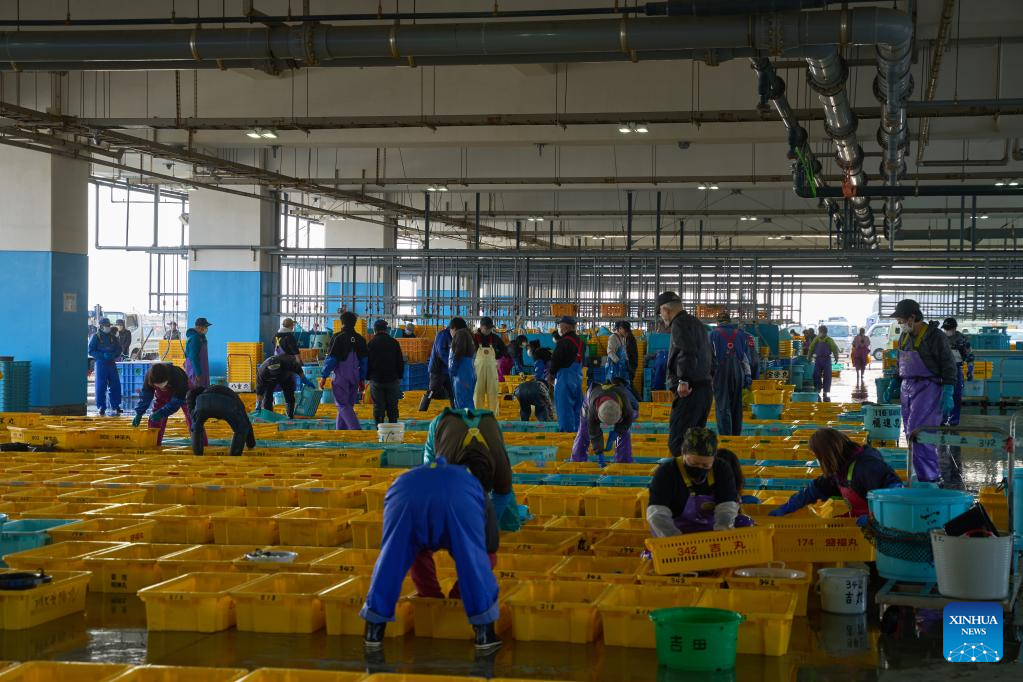
This photo taken on March 8, 2023 shows a fish market in Soma City, Fukushima Prefecture, Japan. Struck by a magnitude-9.0 earthquake and ensuing tsunami that hit Japan's northeast on March 11, 2011, the power plant suffered core meltdowns, resulting in a level-7 nuclear accident, the highest on the International Nuclear and Radiological Event Scale.
Twelve years after the 2011 accident traumatized Fukushima's fishing industry, local fishermen are still struggling for recovery.
As Japan pushes ahead with dumping tons of contaminated nuclear wastewater from the wrecked Fukushima Daiichi nuclear power plant into the Pacific Ocean in spring or summer, local residents, especially those in the fishing industry, believe their livelihoods would again be devastated. (Xinhua/Zhang Xiaoyu)
SOMA, Japan, March 10 (Xinhua) -- As Japan pushes ahead with dumping tons of contaminated nuclear wastewater from the wrecked Fukushima Daiichi nuclear power plant into the Pacific Ocean in spring or summer, local residents, especially those in the fishing industry, believe their livelihoods would again be devastated.
The plant's operator Tokyo Electric Power Company (TEPCO) has repeatedly claimed that the treated water is diluted to national safety standards, and there is no other choice but to release it into the sea as the storage space is reaching capacity.
"We are dead against the release," said Toshimitsu Konno, head of Fukushima prefecture's Soma Futaba Fisheries Cooperative Association. "They say any nuclear power plant will dump treated water into the sea, but the type of water is different. It is contaminated water this time, but water from normal plants is not."
The group, with 846 members, is the largest in the northeastern prefecture.
"I don't trust TEPCO at all, as there has been too much information concealed so far," said Konno, adding that there were precedents of nuclear-contaminated water leakage.
Struck by a magnitude-9.0 earthquake and ensuing tsunami that hit Japan's northeast on March 11, 2011, the power plant suffered core meltdowns, resulting in a level-7 nuclear accident, the highest on the International Nuclear and Radiological Event Scale.
The plant has been generating a massive amount of water tainted with radioactive substances from cooling down the nuclear fuel in the reactor buildings, which are now stored in about 1,000 storage tanks at the plant. Highly radioactive water will continue to be produced, as TEPCO has still not found solutions to remove the melted-down cores.
Twelve years after the 2011 accident traumatized Fukushima's fishing industry, local fishermen are still struggling for recovery.
"Look, it's a working day but all fishermen are taking the day off," a local fishing tackle shop owner unwilling to give his name told Xinhua, pointing to dozens of boats moored in the harbor at Soma city's Matsukawaura, one of the largest fishing ports in northeast Japan.
The man, who has run the shop near the fishing port for 25 years, said the sales are now less than half of the pre-accident volume. "Now they only go out fishing four days a week, as more catches won't find them a market anyway. During the pre-accident fishing season, they took up to one day off a week," he said.
"Who wouldn't oppose the discharge?" the shop owner said, citing the local fishing industry's slow recovery from the severe impact of the nuclear accident on local people, not to mention that many people were forced to stop their work and seek refuge elsewhere.
"TEPCO tells a pack of lies," the shop owner said with much anger. "If it's safe, why don't they use the water to irrigate the fields, grow vegetables, or just sell it in bottles?"
"Once the contaminated water starts to be discharged, everything will go back at least five years," he said, adding that the damage would be irreversible once the ocean is contaminated with radioactive materials.
"Locals are working very hard to revive the Fukushima fishery. All such efforts would come to naught if even one of the millions of fish caught exceeded the radioactive limit," said Kenichi Oshima, a professor at Ryukoku University.
According to Konno, catches in the area are now equivalent to only 20 percent of the volume prior to the 2011 earthquake, although fish prices have recovered 70 to 80 percent of the pre-earthquake level. Dumping the contaminated water would further harm the reputation of local fishing products, despite tests for radioactive substances by much stricter standards to prove their safety.
"Once the contaminated water is discharged, our decade-long efforts have to start all over again," he said.
In the eyes of the 64-year-old man, the Japanese government and TEPCO are simply breaking their previous promises to local residents with such aggressive moves.
"The most important agreement they made with us was not to proceed with any disposal without the understanding of us people involved," he told Xinhua.
At a press briefing earlier this month, when asked whether the discharge plan will be postponed if it fails to gain the full understanding of relevant parties, TEPCO corporate officer Junichi Matsumoto dodged the question by replying that "continued efforts" will be made to "alleviate concerns" and "ask for understanding."
"The understanding should be granted by whom, in what form, and by what criteria? No one has yet been able to answer that up till now," said Konno. ■
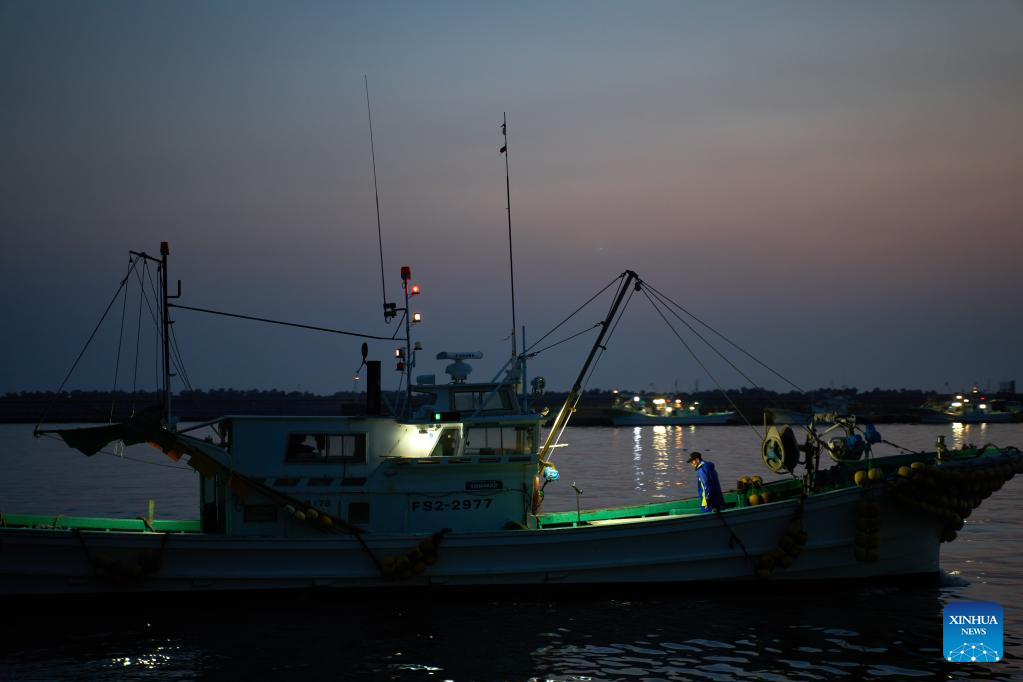
Fishing boats are pictured approaching the shore in Soma City, Fukushima Prefecture, Japan, March 8, 2023. Struck by a magnitude-9.0 earthquake and ensuing tsunami that hit Japan's northeast on March 11, 2011, the power plant suffered core meltdowns, resulting in a level-7 nuclear accident, the highest on the International Nuclear and Radiological Event Scale.
Twelve years after the 2011 accident traumatized Fukushima's fishing industry, local fishermen are still struggling for recovery.
As Japan pushes ahead with dumping tons of contaminated nuclear wastewater from the wrecked Fukushima Daiichi nuclear power plant into the Pacific Ocean in spring or summer, local residents, especially those in the fishing industry, believe their livelihoods would again be devastated. (Xinhua/Zhang Xiaoyu)
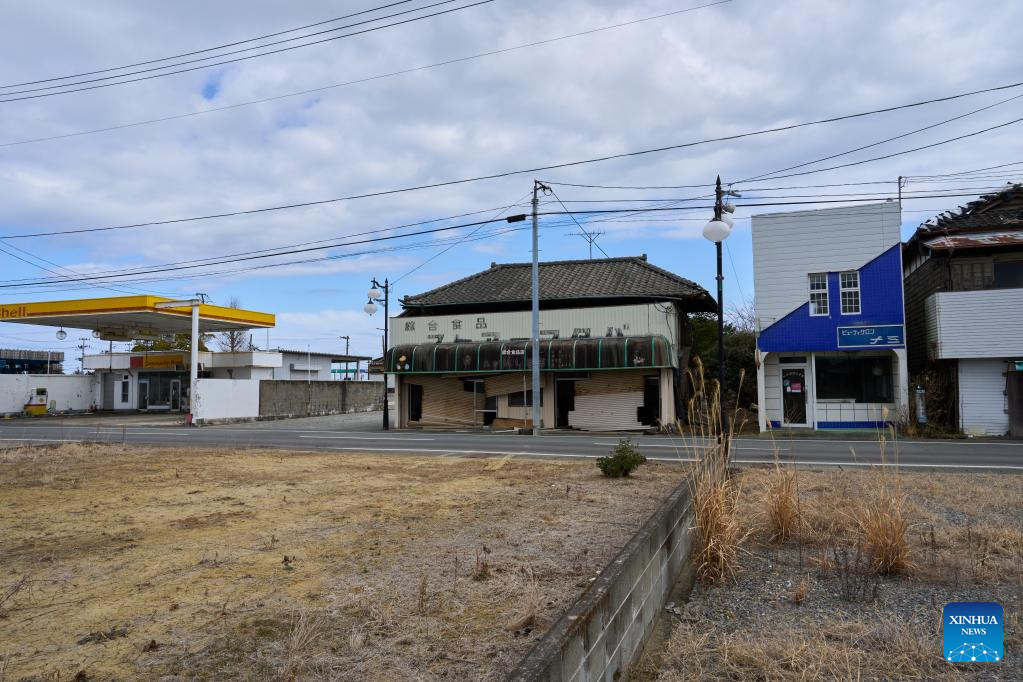
This photo taken on March 6, 2023 shows abandoned houses in Futabacho, Futabagun of Fukushima Prefecture in Japan. Struck by a magnitude-9.0 earthquake and ensuing tsunami that hit Japan's northeast on March 11, 2011, the power plant suffered core meltdowns, resulting in a level-7 nuclear accident, the highest on the International Nuclear and Radiological Event Scale.
Twelve years after the 2011 accident traumatized Fukushima's fishing industry, local fishermen are still struggling for recovery.
As Japan pushes ahead with dumping tons of contaminated nuclear wastewater from the wrecked Fukushima Daiichi nuclear power plant into the Pacific Ocean in spring or summer, local residents, especially those in the fishing industry, believe their livelihoods would again be devastated. (Xinhua/Zhang Xiaoyu)
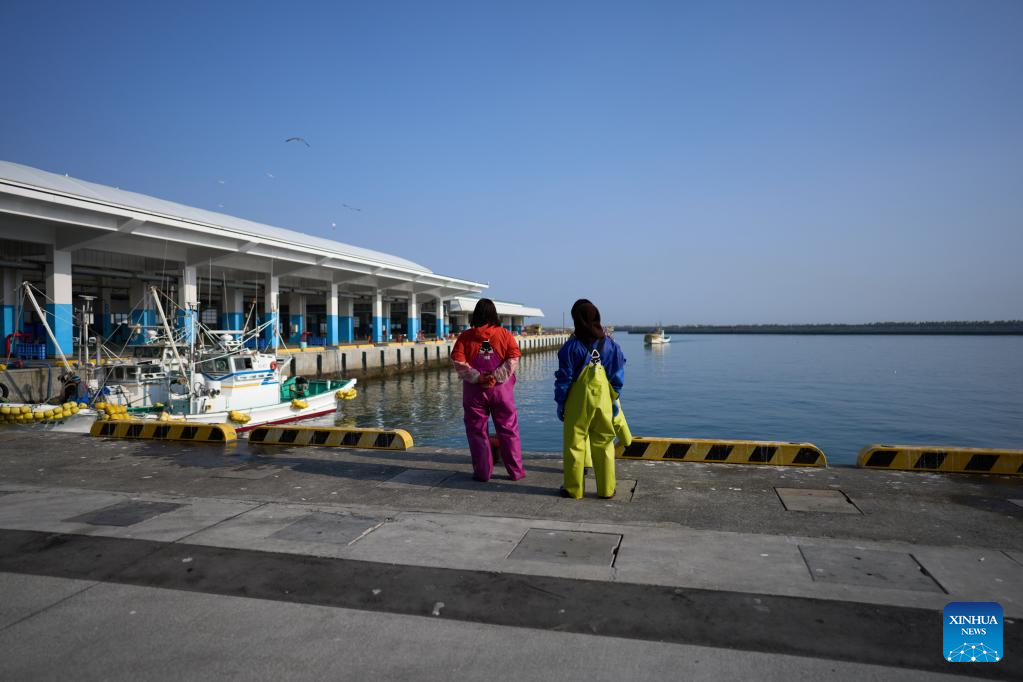
Fishermen wait for fishing boats on a bank in Soma City, Fukushima Prefecture, Japan, March 8, 2023.
Struck by a magnitude-9.0 earthquake and ensuing tsunami that hit Japan's northeast on March 11, 2011, the power plant suffered core meltdowns, resulting in a level-7 nuclear accident, the highest on the International Nuclear and Radiological Event Scale.
Twelve years after the 2011 accident traumatized Fukushima's fishing industry, local fishermen are still struggling for recovery.
As Japan pushes ahead with dumping tons of contaminated nuclear wastewater from the wrecked Fukushima Daiichi nuclear power plant into the Pacific Ocean in spring or summer, local residents, especially those in the fishing industry, believe their livelihoods would again be devastated. (Xinhua/Zhang Xiaoyu)
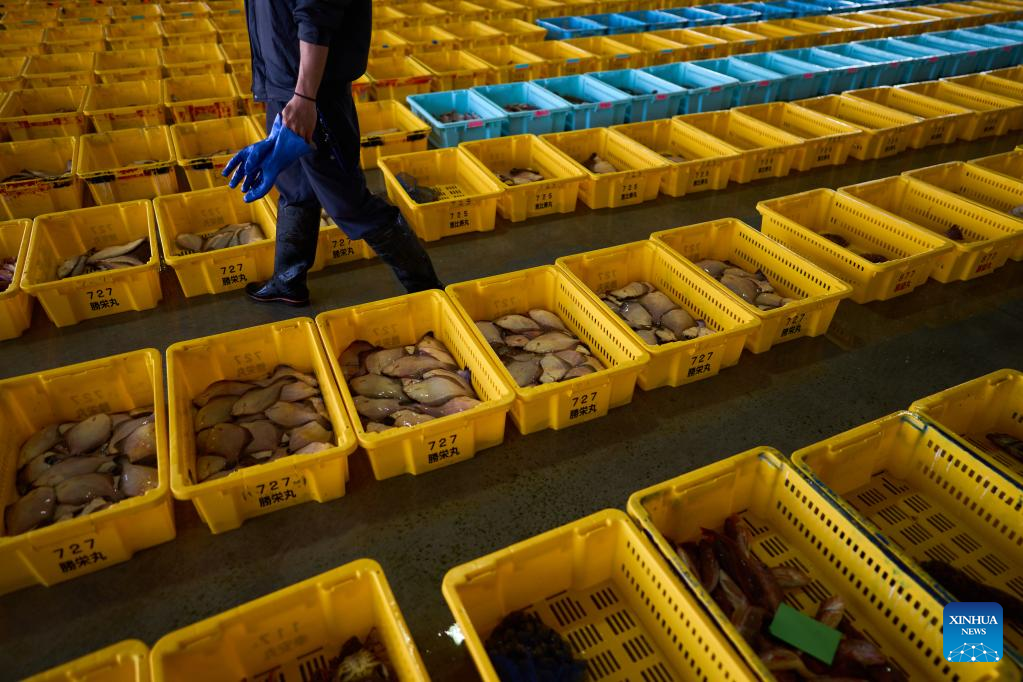
This photo taken on March 8, 2023 shows freshly caught fish at a fish market in Soma City, Fukushima Prefecture, Japan. Struck by a magnitude-9.0 earthquake and ensuing tsunami that hit Japan's northeast on March 11, 2011, the power plant suffered core meltdowns, resulting in a level-7 nuclear accident, the highest on the International Nuclear and Radiological Event Scale.
Twelve years after the 2011 accident traumatized Fukushima's fishing industry, local fishermen are still struggling for recovery.
As Japan pushes ahead with dumping tons of contaminated nuclear wastewater from the wrecked Fukushima Daiichi nuclear power plant into the Pacific Ocean in spring or summer, local residents, especially those in the fishing industry, believe their livelihoods would again be devastated. (Xinhua/Zhang Xiaoyu)
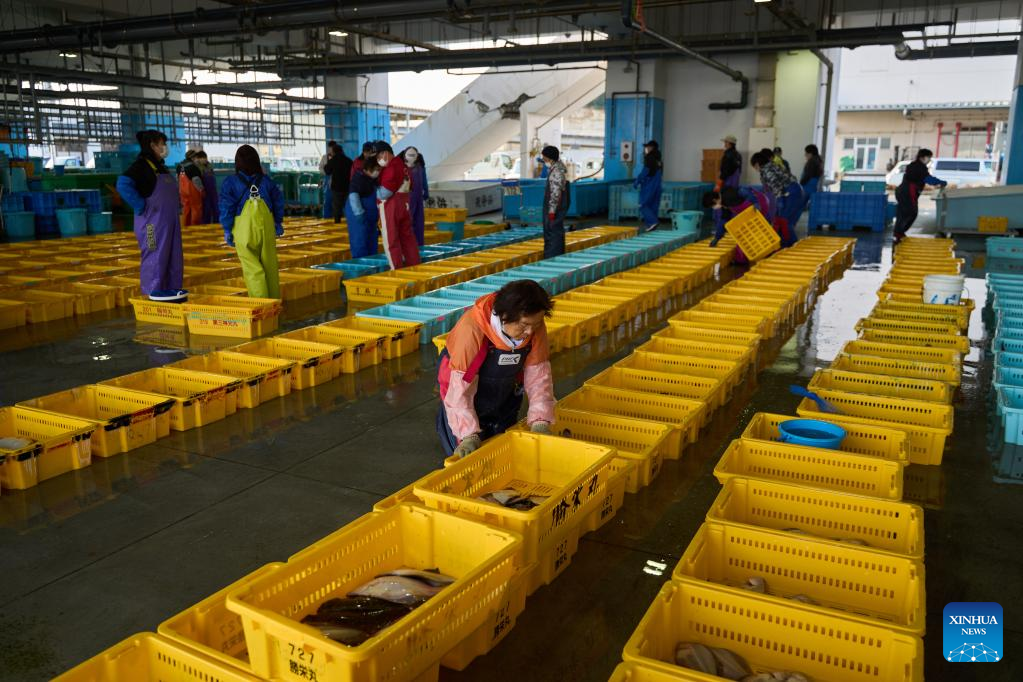
This photo taken on March 8, 2023 shows a fish market in Soma City, Fukushima Prefecture, Japan. Struck by a magnitude-9.0 earthquake and ensuing tsunami that hit Japan's northeast on March 11, 2011, the power plant suffered core meltdowns, resulting in a level-7 nuclear accident, the highest on the International Nuclear and Radiological Event Scale.
Twelve years after the 2011 accident traumatized Fukushima's fishing industry, local fishermen are still struggling for recovery.
As Japan pushes ahead with dumping tons of contaminated nuclear wastewater from the wrecked Fukushima Daiichi nuclear power plant into the Pacific Ocean in spring or summer, local residents, especially those in the fishing industry, believe their livelihoods would again be devastated. (Xinhua/Zhang Xiaoyu)
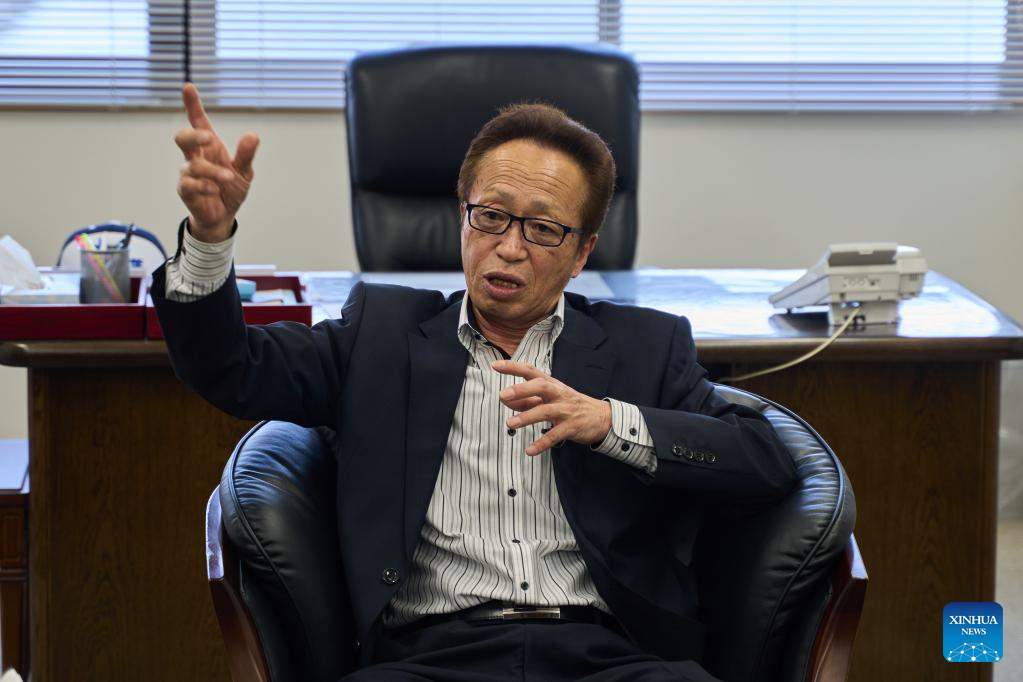
Toshimitsu Konno, head of Fukushima prefecture's Soma Futaba Fisheries Cooperative Association, gives an interview in Soma City, Fukushima Prefecture, Japan, March 8, 2023. Struck by a magnitude-9.0 earthquake and ensuing tsunami that hit Japan's northeast on March 11, 2011, the power plant suffered core meltdowns, resulting in a level-7 nuclear accident, the highest on the International Nuclear and Radiological Event Scale.
Twelve years after the 2011 accident traumatized Fukushima's fishing industry, local fishermen are still struggling for recovery.
As Japan pushes ahead with dumping tons of contaminated nuclear wastewater from the wrecked Fukushima Daiichi nuclear power plant into the Pacific Ocean in spring or summer, local residents, especially those in the fishing industry, believe their livelihoods would again be devastated. (Xinhua/Zhang Xiaoyu)
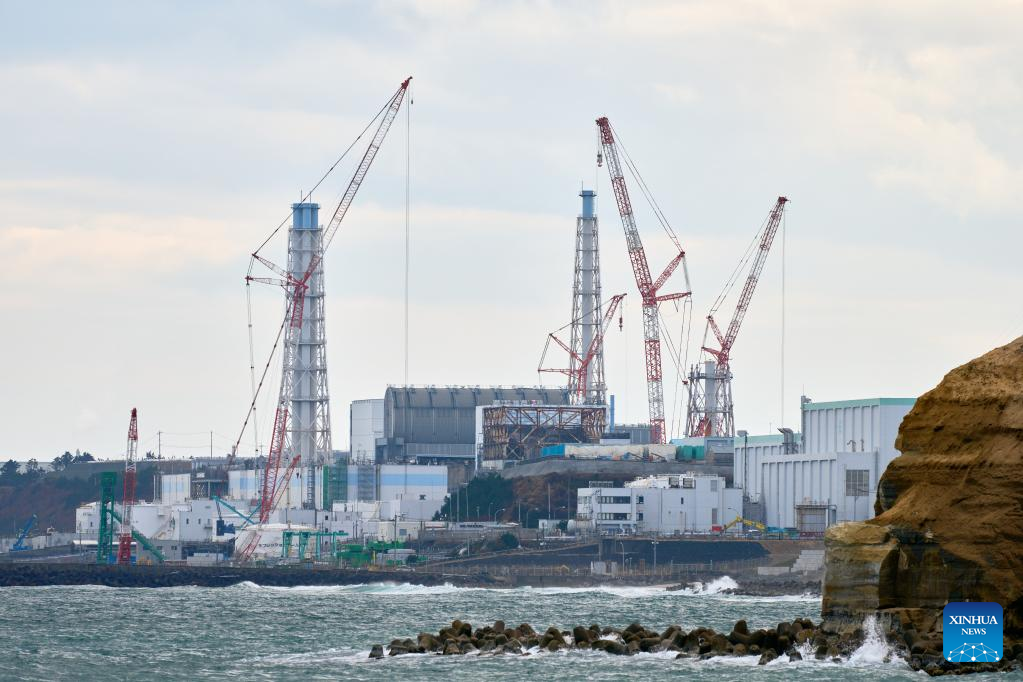
This photo taken on March 6, 2023 shows the Fukushima Daiichi nuclear power plant in Futabacho, Futabagun of Fukushima Prefecture, Japan. Struck by a magnitude-9.0 earthquake and ensuing tsunami that hit Japan's northeast on March 11, 2011, the power plant suffered core meltdowns, resulting in a level-7 nuclear accident, the highest on the International Nuclear and Radiological Event Scale.
Twelve years after the 2011 accident traumatized Fukushima's fishing industry, local fishermen are still struggling for recovery.
As Japan pushes ahead with dumping tons of contaminated nuclear wastewater from the wrecked Fukushima Daiichi nuclear power plant into the Pacific Ocean in spring or summer, local residents, especially those in the fishing industry, believe their livelihoods would again be devastated. (Xinhua/Zhang Xiaoyu)



